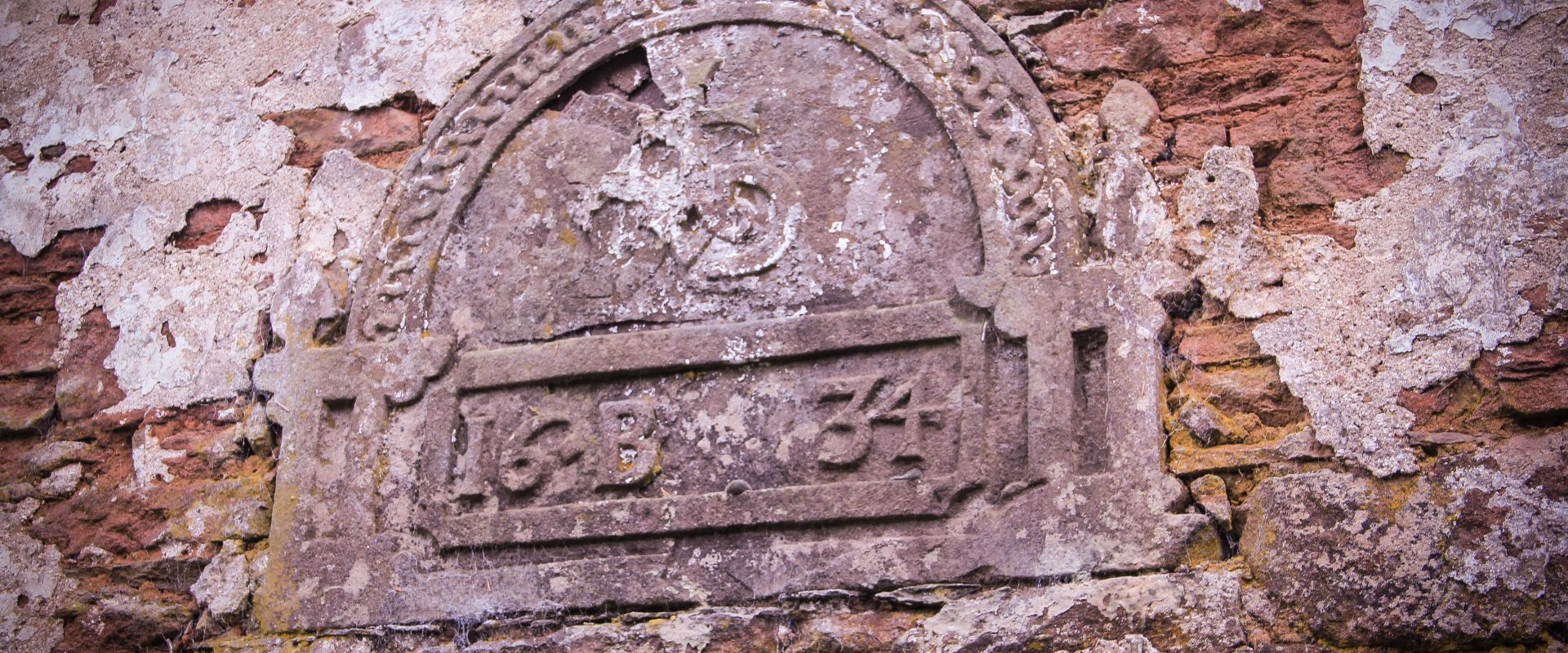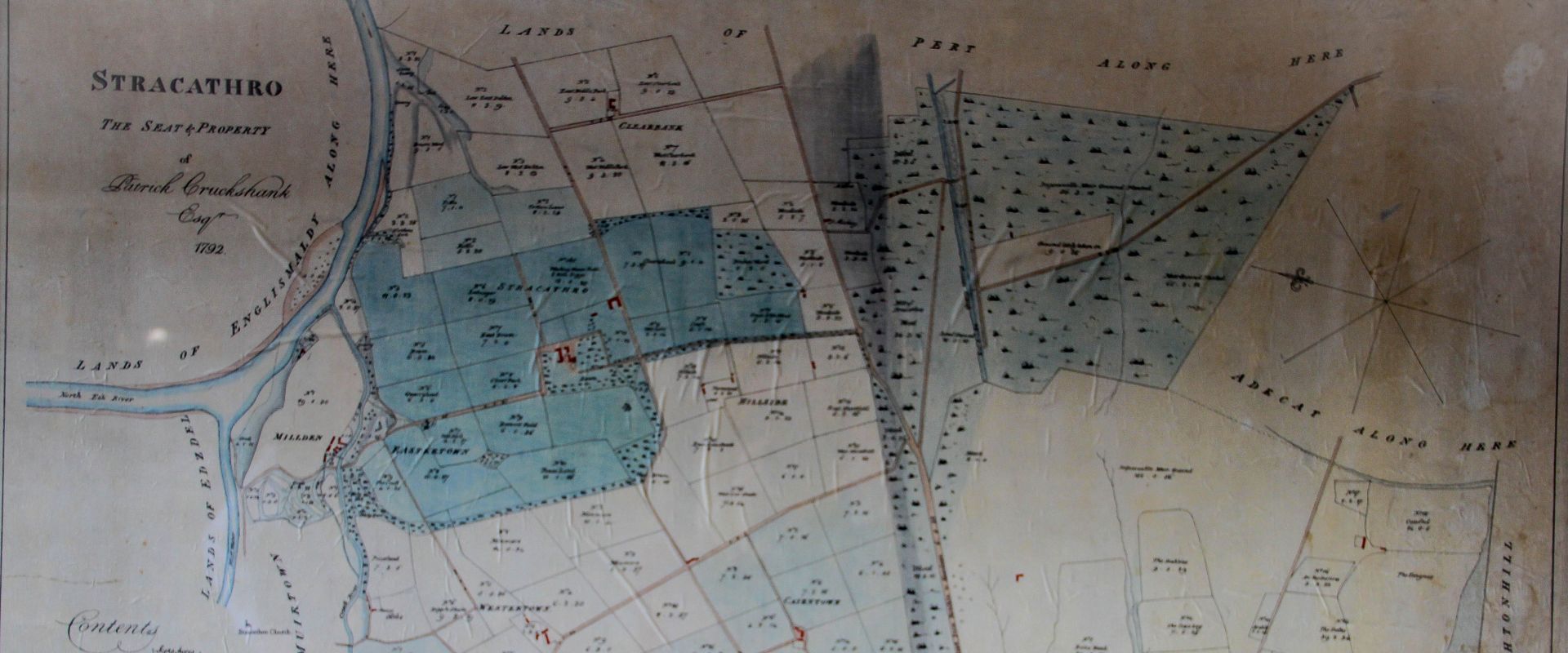
History
The first written evidence of Stracathro as a place name appears in the registration of a gift by Bishop Turpin of Brechin to the new Abbey in Arbroath at the end of the twelfth century when he generously gave Toftum et Croftum and two acres of the Villa de Strukatherach as a house warming present.
Incidentally, that spelling is one of fifteen variations to appear in printed form over the next 800 years.
The Romans made their presence felt from AD 75. Clearly at times fact and fantasy combine, but there seems little doubt that the permanent fort at Stracathro, built under Agricola remains the most northerly undisputed one in the world. Discovered through crop markings in 1955, it has a clearly defined perimeter. Originally thought to have been briefly used, a recent survey by Liverpool University suggests it may have been permanently occupied for thirty years.
In addition, there are two other marching camps at Stracathro, emphasising the importance of the ford over the North Esk just above its confluence with the West Water. A Roman road, as part of the Gask Ridge defences and possibly later improved by Severus in the third century, would remain the principle thoroughfare until the construction of the Northwater Bridge in the 15th Century.
Two and perhaps three famous battles were fought at Stracathro. King David 1's army and the Earl of Moray met in 1130. Despite being evenly matched in number, the Royalists soundly beat the men from the north, suffering 1,000 casualties to the rebels' 4,000. The tumulus for the former was levelled in 1830 and the rich black earth was reputed to be an excellent fertiliser!
The second was that of the Battle of Brechin in 1452. Whether this was a local stramash or part of a larger rebellion is open to conjecture, but it involved the Earls of Huntly and Crawfurd. The latter came off the worst (thanks to the treachery of the laird of Balnamoon) and he fled back to his castle at Finavon. The area is called Huntlyhill.
The third battle might have been that of Mons Graupius, fought by Agicola in AD83, when he subjugated the Caledonians led reputedly by Calgalus. Of some thirty possible sites, Huntlyhill (as above) is only championed by one historian, but is defined as 'interesting' by Romanscotland .
As every schoolchild should know, especially if taught in primary 4 by Miss Hunter at Brechin High School, John Balliol was forced to surrender his crown to Edward 1 (Hammer of the Scots) on 7th June 1296 in the churchyard at Stracathro. Thereafter, the wretch was known as Tom Tabbard (empty coat).
It was not until the reformation and disposal of Church property that the land fell into private ownership. Sir Robert Lauder was the original purchaser in July 1566 (villam et terras de Stracathrow), he sold it in 1574 to Alexander Hume of Manderstoun who 25 years later sold it on to John Douglas of Tilliequhillie (villam et terras de Stracathro cum earum piscariis The North Watter, molendinid fullonum, terras brasinariius, ceteris molendinis in dominio de Brechin, being the land and houses of Stracathro with the fishing on the North Esk and all mills and breweries). By 1656 Stricrathro was owned by Peter Turnbull of Ulysses-haven (Usan), and his family sold Strickathrow (or by then also Skritatro) to the Mackenzies a century later. They in return must have received an offer too good to refuse as they sold Strikathro to Patrick Cruikshank, who like the Mackenzies had made his fortune in Jamaica.
The Campbells bought the estate in 1847. Sir James Campbell had been Lord Provost of Glasgow, and partnered his brother William in J&W Campbell, a retail warehousing emporium, and precursor to the department store. One son became a liberal prime-minister and the other a Tory MP. The Georgian house built by the Cruikshanks and extended by the Campbells was taken over as part of the war hospital, and then purchased by the Health Board in 1948.




